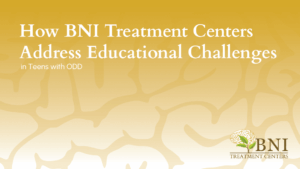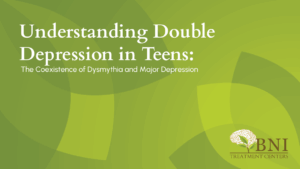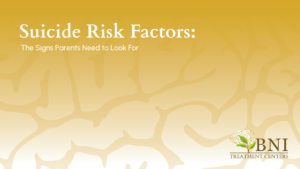The teen years seem to be increasingly challenging, as new potential sources of pain and strife enter an already complex developmental phase in life. Social media has had a profound impact on this generation’s teens and young adults, afflicting them with feelings of self-doubt, a sense of inferiority, and a growing divide between the haves and the have nots. Teens may flaunt their designer clothes, ripped bodies, and filter-enhanced selfies on social media, causing other peers, or followers, to feel completely inadequate.
One of the most glaring signs of teen distress in our times is the spike in self-harming behaviors, especially among teenage girls. Since the early 2000s, self-harm rates among girls aged 10-14 jumped 166%, and rose 62% among girls aged 15-19, as reported by JAMA in 2017. Among the various methods of self-harming, cutting remains the one most accessed. Cutting behavior in teens has become a sort of coping mechanism. Much the same as abuse of drugs or alcohol serves as a method of self-medicating emotional strife, cutting is used to mitigate emotional pain as well.
Understanding why a teenager might resort to inflicting pain and damage to their body can help parents approach their teen with an appropriate, measured response that will yield a more productive outcome in the long-run.
About Cutting Behavior in Teens
Cutting is a form of self-mutilation in which an individual uses a sharp object, just as a razor blade, a knife, or even one’s fingernails to draw blood. The teen may cut their arms, wrists, legs, or bellies. Shockingly, teens who exhibit cutting behavior may have begun the practice even before adolescence.
Two assumptions that, at first blush, people might make cutting behavior in teens are that it is 1) a cry for help, and 2) an attempt to get attention. Although these presuppositions seem logical, they are incorrect, as cutting is neither a cry for help or an attempt at gaining attention. On the contrary, most teens who cut go to great lengths to hide their maladaptive behaviors from parents, teachers and friends.
Instead, cutting is more of a stress management tool, although a disordered one. Most of the teens who succumb to this self-destructive behavior are in some kind of emotional crisis and simply do not have the coping skills to manage it normally. To these adolescents, the intensity of the stress, anger, anxiety, or emotional pain they are experiencing seems completely out of control and unmanageable. Cutting brings an immediate sense of relief, a release of the bottled up tension.
Why Do Some Teens Cut and Others Do Not?
According to Michael R. Hollander, Ph.D., approximately 14%-18% of high school aged kids engage in self-injury, as reported in the Huffington Post. That means that about 85% of teens access other types of coping skills to manage the strife that is associated with this age group. So what makes the difference?
Temperament has something to do with the disordered behavior of cutting. A teen whose personality is predominantly melancholic may have a more sensitive nature and be more introspective, internalizing strife. Another factor possibly attributed to teens that cut is emotional maturity and poorly developed coping skills for dealing with frustration. Still others might engage in the self-mutilation as a dare, or due to a trend in cutting and wanting to feel part of something.
In addition, cutting behaviors in teens are often co-occurring with mental health disorders, such as anxiety disorder, trauma disorder, bipolar disorder, depression, or substance use disorder. When this is the case, it is even more important for the teen to receive intensive psychological or psychiatric intervention.
What Other Types of Self-Harming Behaviors Do Teens Engage In?
While cutting is the predominant type of self-injury, there are other methods that teens may engage in to get the same desired emotional release. These include burning the skin with a cigarette butt, lighted match, or candle wax, branding, head banging, biting, skin picking, self-flagellation, and hair pulling. The main objective is to harm body tissue in some way in order to produce some type of emotional release. A common sign that a teen is engaging in self-injury might be they wear long-sleeve shirts or long pants, even in sweltering weather, to cover scabs, burns, scars, or bruises.
Mental Health Disorders in Teens
Teen mental health issues have become front and center in the public consciousness. Suicide rates have jumped, making it the second leading cause of preventable death in the age group. Teens today feel more intense academic pressure and also the effects of social media, a relatively recent source of teen distress. Some of the more common mental health disorders that may accompany cutting behaviors include:
- Depression. Among the age group of 12-17, depression affects 13.3% of these adolescents. Symptoms include feelings of sadness and despair, weight gain or loss, change in sleep habits, fatigue, slowed thinking and movements, moodiness, irritability, loss of interest in their usual pastimes, and suicidal thoughts.
- Social anxiety. Teens who struggle with social anxiety experience intense fear and dread regarding social settings where they perceive they will be harshly judged. This leads to avoidance behaviors and isolation. Symptoms include sweating, blushing, stomach distress, trembling, and intense feelings of worry or dread.
- Panic disorder. Panic disorder among teens can be frightening, as the symptoms usually come without warning and can mimic a serious health event. Symptoms include accelerated heart rate, shortness of breath, excessive sweating, chest pain, a choking feeling, dizziness, trembling, and nausea.
- Bipolar disorder. Bipolar disorder tends to emerge in early adolescence and features extreme mood swings. Bipolar disorder is very disruptive to everyday functioning, with symptoms that include bursts of intense energy, rapid talking, risky sexual behaviors, impulsivity, insomnia, hostility, irritability, feelings of worthlessness, feeling sad, change in eating habits, loss of interest, somatic symptoms, and suicidal ideation.
- ADHD. Teens with ADHD may become irritable and frustrated due to this attention-deficit disorder. Symptoms include forgetfulness, being easily bored, poor listening skills, easily distracted, loses things, slowed cognitive processing, difficulty paying attention, constant motion, insomnia.
How To Approach Your Teen About Cutting
It is perfectly normal for a parent to initially be extremely upset and worried when learning their teen is engaging in cutting behavior. Some parents might immediately worry that it is a precursor to a suicide attempt or that it could reveal serious mental illness. But as natural a response at that might be, when approaching a teen about their cutting it is important to do so in a measured way. The goal is to get the teen to open up a dialogue about what is troubling them, allowing the parent to determine what the next best steps should be.
Parents should find a quiet, stress-free time to sit down and share concerns with their teen. Express an understanding of how difficult that stage of life can be, and make an effort to be nonjudgmental or highly emotional when having this discussion. Ask about what the teen is going through—a breakup, bullying, academic problems—to get a feel for the severity of the issue behind the cutting behavior, and validate the teen’s feelings that go along with it.
Treatment For Cutting Behavior in Teens
Initially, parents should consider getting a referral for a therapist who specializes in self-injury behaviors. The therapist will probably assign ongoing therapy sessions and may also suggest they join a group of other teens who also cut to share their stories and trials. If there is a mental health disorder accompanying the cutting behavior, the therapist may refer the teen to a psychiatrist who can prescribe appropriate medication.
If, however, the teen’s behaviors escalate and become more dangerous to their wellbeing, a residential program would be the appropriate level of care. In a supportive residential setting, the teen has the opportunity to work on their issues without the triggers that might be fueling the cutting behavior. A very thorough intake evaluation will be conducted to guide the clinical staff in designing an individualized treatment protocol for the teen. Cutting behaviors are often an expression of a primary mental health disorder, which will be identified and properly addressed. Residential treatment will include:
- Psychotherapy. The one-on-one meetings with a psychotherapist allow the teen a safe, supportive space to open up and share about whatever might be contributing to their emotional strife. The therapist has several evidence-based modalities at their disposal, such as cognitive behavioral therapy, solution-focused therapy, psychodynamic therapy, dialectical behavior therapy.
- Group sessions. During the group counseling sessions, teens are grouped together and encouraged to participate in discussions that revolve around topics related to the self-harming behaviors. These small groups offer teens added peer support while they are in treatment. Family-focused group sessions are an essential component in teen residential treatment. The family is the primary social unit, so specialized family therapy is a primary treatment element.
- Medication. In some cases, medication management will be a treatment element. The teen might benefit from antidepressants, anti-anxiety medications, or mood stabilizers.
- Adjunctive therapies. Complementary activities that enhance the overall treatment outcome are often an important aspect of integrative therapy for teens. Teens require a feeling of engagement if they are to remain interested in participating in treatment. Experiential activities help in that regard. These activities can include recreational therapy, outdoor activities such as surf therapy, hiking, or equine therapy. Holistic activities, such as mindfulness meditation, yoga, art and music therapy, and journaling can also augment the effects of therapy.
BNI Treatment Centers Provide Residential Treatment for Teens in Los Angeles
BNI Treatment is a residential mental health and dual diagnosis treatment program for teens, providing individualized treatment for a wide array of mental health disorders including self-harm. At BNI Treatment, teens will participate in a careful intake process, including psychological assessments, medical exam, and an intake interview, that will help the clinical team design a completely customized treatment plan. BNI also provides medical detox and dual diagnosis treatment if a co-occurring substance use disorder is diagnosed. For more information about the program, please contact BNI Treatment, a teen treatment center, at (888) 522-1504 to get your teen the help they need.




